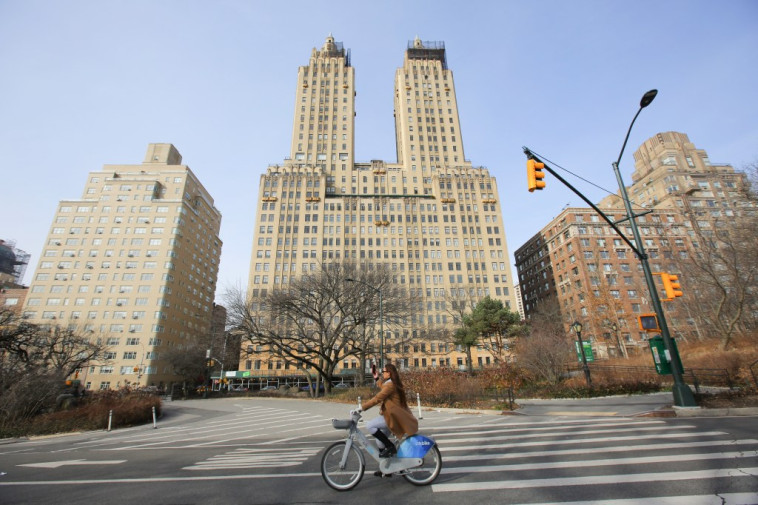City Hall tried to assure critics Thursday that a possible end to residential building size restrictions now being debated in Albany won’t lead to a forest of 1,500-foot-tall towers blighting Manhattan — but will encourage the construction of wider classic buildings.
Deputy Mayor Maria Torres-Springer tried to put a rosy spin on plans in the state legislature to lift a decades-old cap that limits the size of structures in the five boroughs — saying that it will help the housing crisis but not cause “vertical slums.”
The newly allowed buildings would be short but wide, similar to places like The Dakota on Central Park West, and not skinny and mega tall like the 1,000-foot-plus “Billionaire Buildings” in Midtown, she said.
“Our failure to build homes is at the core of our housing crisis,” she said in a speech to the Association for a Better New York on the New York University campus in Greenwich Village.
Albany lawmakers are considering the zoning change as New York City attempts to dig itself out from a housing deficit that’s been estimated at 342,000 units.
Under current law, building like those on Central Park West and Fifth Avenue, which are often 20 to 30 stories tall, are banned by the state size cap because buildings that use their entire lot can only be 12 stories tall.
Conceptually, they would resemble the Eldorado and other famed buildings that line Central Park West and Fifth Avenue.
Torres-Springer said the regulations would have to be approved by the City Council before they could become law and, that lawmakers would get a second bite at the apple because they would have to sign off on using the new zonings in any neighborhood.
Additionally, any building constructed under the more generous zoning would be required to set aside 20-30% of their units for working-class or middle-income households.
She said this would be a great way to get more space for badly needed apartments without ruining the feel of New York.
“Our failure to build homes is at the core of our housing crisis,” she told the room.
Albany lawmakers are considering the zoning change as New York City attempts to dig itself out from a housing deficit that grew by 100,000 over the most recent decade.
A Post investigation detailed in February how the cap had backfired badly by banning those classic New York designs while permitting the construction of the super tall pencil towers that are reshaping Midtown’s skyline while only providing a few dozen apartments a piece.
However, supporters of the cap argue that it is essential to protect New York’s character.
“Governor Hochul and the State Legislature are deciding whether or not to lift the long-standing cap on the allowable size of residential developments in New York City, which would enrich developers and destroy the scale of neighborhoods,” the Greenwich Village Society of Historic Preservation argued in a post on its website this year as it again campaigns for the cap to remain.
Others hailed the new buildings.
“This is a great move by the city,” said Moses Gates, a top expert at the Regional Plan Association. “By proposing these zoning districts we’ll be able to have a concrete conversation about what these buildings could look like and how affordable they’ll be instead of just engaging in speculation.”
City Hall’s proposal largely mirrors a proposal endorsed by lawmakers in the state Senate, which would allow for the construction of larger and broader buildings provided that historic districts are not rezoned and the new construction sets aside roughly one-quarter of the new units for below-market rents.
“They were in my office two days ago saying we’re totally on board with your proposal,” said state Sen. Liz Krueger (D-Manhattan), who chairs the powerful budget committee.
Sources say that lawmakers in the Assembly remain more divided on the issue.
Additional reporting by Vaughn Golden






